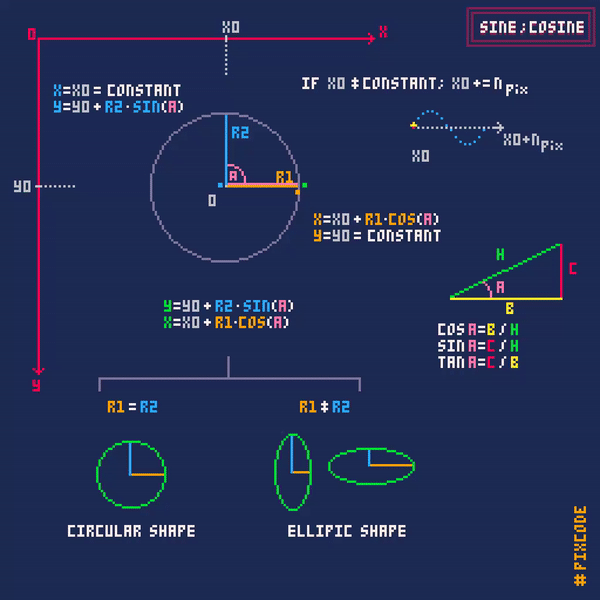Hello. I’m not in trigonometry. Just want to make that clear. I also do not care. I need someone to explain Sin, Cos, and Tan, and how the hell they make the stuff rotate in Focus 2.
This question doesn’t make sense. You say you want to make it clear that don’t care about Trigonometry, then ask how to to make stuff rotate with sin, cos, and & tan. The answer is Trigonometry.
So which is it?
A) You want to hear about how sin, cos, & tan work and are useful.
or
B) You don’t care to learn about Trig.
You can only choose one 
There’s a ton of uses for Trigonometry, but I can’t explain it if you don’t care.
I’m interested in this. Right now, I only know about sine & cosine waves, but I’m not sure those apply. Could someone provide insight on this?
I don’t care that I’m not in trig 
Yes, I’m eager to learn this, even tho I’m having to learn Geometry and Algebra RN 
Its late, so I’ll try to explain more later.
But here is a Gif that really helped me, as well as a test I made.

You are close 
Next step is to combine those sine and cosine waves and … Tada … you get circular movements.
The example @JR01 posted is just the best 
Second question: how to write in the flowlab expression?
Ok, got that solved.
@TinkerSmith, @JR01 how would I anchor the moving object to a certain place?
Nvm, just found that I need to adjust the A and stuff like that…
Add the locations at the end, after all the math.
Math in the expression uses commands like Math.cos(), these commands can be found in my bundle library.
I extracted some of the expressions from your example, and found that if I adjusted the A in the evaluation I could anchor it to a location (I’m assuming that would be the Tangent), and then use the Cosine and Sine to rotate it.
A is added after the math like A + (other math).
And no, Tangent is its own graph. Cos plots the circle in the x axis and sin plots the points on the circles y axis. Your adding the Center of the object (X,Y) after the X and Y plots of the circle is made.
In my example, you can see the Sin and Cos lines on the axis, the ball is combining both axis